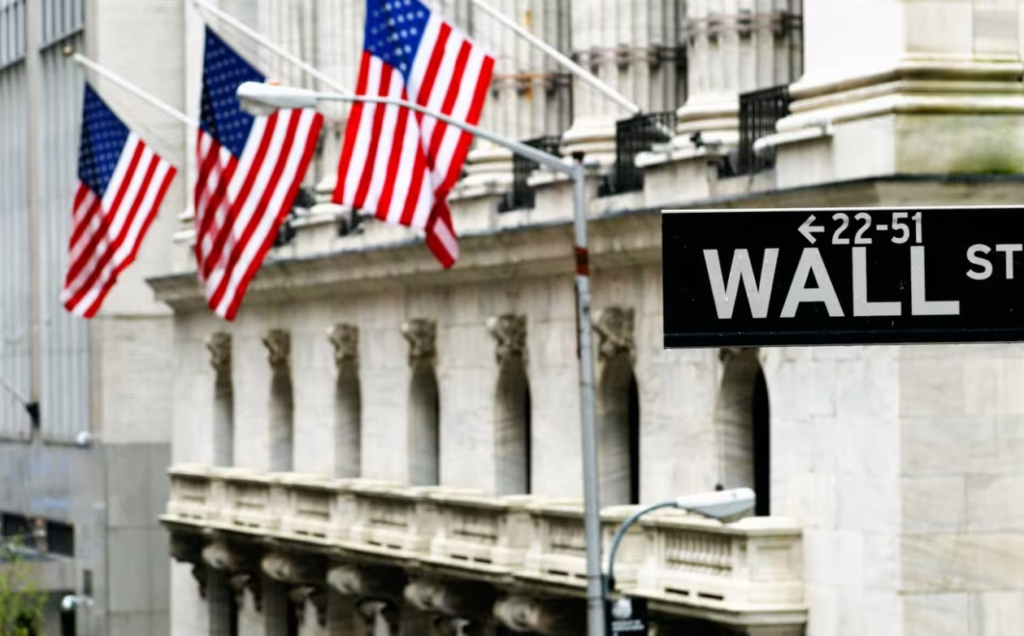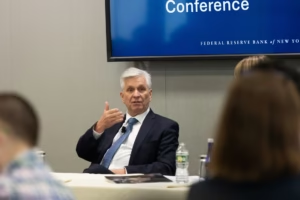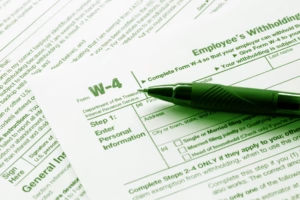The macroeconomic strategist at Deutsche Bank claims that recent indications of price increases in the United States are “hard to reconcile with the lack of concern seen in market-based inflation expectations.”
By some indicators, the market appears unconcerned about the possibility of a surge in consumer prices, despite worries that President Donald Trump’s “liberation day” tariffs could fuel inflation.
Henry Allen, a macroeconomic strategist at Deutsche Bank, stated in a research note on Tuesday that “even though several inflation indicators are gaining momentum, U.S. inflation swaps have barely moved since Liberation Day.” “They’ve seen incredibly little movement” in spite of the substantial duties that were announced, he said.
After the U.S. market closed on April 2, the day Trump announced sweeping tariffs, one-year U.S. inflation swaps were trading at 3.40%, down from 3.36% the previous week, Allen said. These swaps are a market-based indicator of inflation expectations, as opposed to consumer polls that show where respondents believe prices may be going.
Even while inflation has significantly decreased from its peak in 2022, it is still above the Federal Reserve’s 2% objective and could rise—at least temporarily—as a result of tariffs. Investors will get new economic data on U.S. inflation in April on Friday, which will come from the price index of personal consumption expenditures.
Investors have been considering subsequent trade policy changes, such as a 90-day pause on so-called reciprocal tariffs, a 90-day reduction in levies on China, and, most recently, a delay of Trump’s threatened 50% tariff on the European Union, even though the implementation of the large tariffs caused market volatility. Investors are keeping an eye on talks between the United States and its international trading partners in hopes of seeing any encouraging indications that talks could result in reduced tariffs.
“Of course, investors could expect little inflationary impact from the tariffs, but other assets have been more volatile, suggesting that investors are expecting at least some changes to the economy as a result,” Allen stated.
When looking over a longer time horizon, inflation swaps—financial contracts that investors might employ as a hedge against the danger of rising prices—haven’t moved much since April 2.
According to Allen, the 5-year inflation swap increased somewhat from 2.54% on April 2 to 2.56% last week.
The magnitude of the tariffs Trump proposed on April 2 originally shocked the stock and bond markets, but as the White House pursues trade agreements across the world, volatility indicators have subsequently decreased.
The U.S. stock market’s fear indicator, the Cboe Volatility Index VIX, peaked in early April, but on Tuesday it was trading near its long-term average of 20.
The ICE BofAML Move index, a measure of bond market volatility, has also decreased since early April but is still high.
Allen mentioned last week’s flash readings from S&P Global’s purchasing managers index and stated, “Several forward-looking inflation indicators have been concerning, with upward momentum since Liberation Day.”
“The U.S. flash PMIs for May last week showed that both input and output prices were rising at their fastest pace since 2022,” Allen stated. “That’s hard to reconcile with the lack of concern seen in market-based inflation expectations.”
According to a consumer-price index reading earlier this month, U.S. inflation increased by 2.3% during the 12-month period ending in April. Over the same time period, core inflation—which does not include the cost of food and energy—grew at a faster annual rate of 2.8%.
In a research note released on Monday, David Mericle, the top U.S. economist at Goldman Sachs, stated, “We expect tariffs to provide a one-time price level boost that causes core PCE inflation to rebound to 3.6% later this year before coming back down next year.” He was talking about core data from the Fed’s favored inflation indicator, the personal consumption expenditures price index.
“But memories of the pandemic inflation surge and the rise in [University of] Michigan inflation expectations above pandemic peaks have led some to worry that the reacceleration this year could instead prove more persistent,” added Mericle.
U.S. consumers surveyed by the University of Michigan in mid-May reported that they had increased their year-ahead inflation predictions from 6.5% in April to 7.3%.
“The main reason we are less worried is that we expect the economy to be weak this year, with solidly below-potential growth and a modest rise in the unemployment rate,” Mericle stated.
The Conference Board reported on Tuesday that its consumer confidence index increased in May following a five-month decline, with the recovery accelerating following a truce earlier this month as a result of trade negotiations between the United States and China.
Trump’s announcement on social media on Sunday that he was postponing a 50% duty on the European Union until July 9 while the European trading group works on a trade deal with the United States seemed to reassure investors, as the U.S. stock market closed significantly higher Tuesday.
On Tuesday, the S&P 500 SPX surged 2%, the Nasdaq Composite COMP gained 2.5%, and the Dow Jones Industrial Average DJIA increased 1.8%.
In the meantime, bond market interest rates were declining. Based on 3 p.m. Eastern time levels, the yield on the 10-year Treasury note BX:TMUBMUSD10Y fell 7.6 basis points to 4.432% on Tuesday, marking the biggest daily loss since April 24. This information was provided by Dow Jones Market Data.





